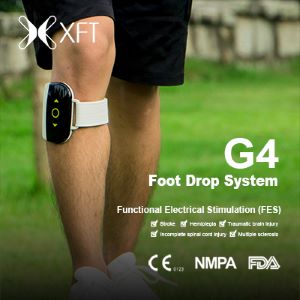Measurement
Evaluating the Accuracy of a Novel Motion Tracking Sensor Technology as part of a Full-Body Immersive VR Rehabilitation System
Wednesday, November 1, 2023
10:20 AM - 10:26 AM
Location: Station 7
Research Objectives: To evaluate the accuracy and usefulness of a novel motion tracking technology currently used as part of a commercially available, full body immersive rehabilitation system. Specifically, we wanted to assess the accuracy of different, clinically relevant kinematic measurements relevant to physical therapy clinical practice (e.g., joint angles, functional reach measurement, etc.).
Design: Motion tracking data was collected using sensors worn by participants guided by a protocol to produce specific movements and poses while also capturing ground truth measurements. The accuracy of the measurements produced by the motion tracking sensors against the ground truth measurements was compared in order to better understand their utility in clinical practice. Participants performed a series of scripted, clinically relevant upper body and lower body movements and poses while the (1) system performed ambient data capture and measurement and (2) a clinically-trained experimenter collected ground truth data for later evaluation.
Setting: Data was captured in a non-clinical environment.
Participants: 20 healthy participants volunteered to take part in the research
Interventions: No clinical interventions were administered.
Main Outcome Measures: Joint angles (degrees), spatial positions (inches)
Results: The accuracy of 10 different measurement types produced by the system: 8 joint angles along with hand and feet positions. Most joint angles were found to be within 15 degrees of accuracy of the ground truth measurements (interquartile range 2-14 degrees) while positional accuracy of the hands had mean errors of 1.3 and 1.5 inches, respectively.
Conclusions: The novel motion tracking sensor technology used in conjunction with a commercially available immersive rehabilitation system was shown to have sufficient accuracy for use in many rehabilitation settings, especially as compared to the known variability associated with human measurement often used in traditional rehabilitation practice. This opens the possibility for improvements to current clinical measurements, as the sensor technology is readily available for use in clinical settings. Taken in concert, these technologies can offer new insights into a patient’s health, allowing clinicians to provide better targeted therapies for patients.
Author(s) Disclosures: All authors listed are employees of Penumbra, Inc..
Design: Motion tracking data was collected using sensors worn by participants guided by a protocol to produce specific movements and poses while also capturing ground truth measurements. The accuracy of the measurements produced by the motion tracking sensors against the ground truth measurements was compared in order to better understand their utility in clinical practice. Participants performed a series of scripted, clinically relevant upper body and lower body movements and poses while the (1) system performed ambient data capture and measurement and (2) a clinically-trained experimenter collected ground truth data for later evaluation.
Setting: Data was captured in a non-clinical environment.
Participants: 20 healthy participants volunteered to take part in the research
Interventions: No clinical interventions were administered.
Main Outcome Measures: Joint angles (degrees), spatial positions (inches)
Results: The accuracy of 10 different measurement types produced by the system: 8 joint angles along with hand and feet positions. Most joint angles were found to be within 15 degrees of accuracy of the ground truth measurements (interquartile range 2-14 degrees) while positional accuracy of the hands had mean errors of 1.3 and 1.5 inches, respectively.
Conclusions: The novel motion tracking sensor technology used in conjunction with a commercially available immersive rehabilitation system was shown to have sufficient accuracy for use in many rehabilitation settings, especially as compared to the known variability associated with human measurement often used in traditional rehabilitation practice. This opens the possibility for improvements to current clinical measurements, as the sensor technology is readily available for use in clinical settings. Taken in concert, these technologies can offer new insights into a patient’s health, allowing clinicians to provide better targeted therapies for patients.
Author(s) Disclosures: All authors listed are employees of Penumbra, Inc..
Learning Objectives:
- Upon completion, participants will be able to understand the measurement accuracy of the latest, commercially available motion tracking technologies
- Upon completion, participants will be able to understand methods used to evaluate accuracy of a motion tracking sensor system
- Upon completion, participants will be able to understand how motion tracking sensor technologies are used in current clinical settings

.jpg)
